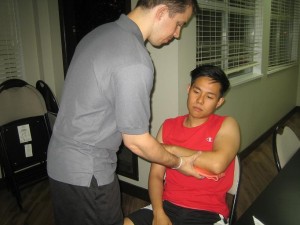A swollen collarbone is characterized by the accumulation of any fluid or enlargement. It is caused by soft tissue injury affecting the muscles and subcutaneous tissue and results to swelling over the collarbone. It also affects the muscles that are connected to the collarbone and the platysma muscles located above and over the top.
The collarbone is one of the strongest bones in the body. It carries the weight of the upper arms with the help from the ligaments and muscles that are attached to it. The collarbone is attached to the sternum at one end and the other end is attached to the shoulder blade. It is the attachment that allows weight bearing.
Causes of a swollen collarbone
- A direct injury to the collar bone due to vehicular accidents, falling from a height, playing contact sports or a blow to the shoulder.
- Infections
- Certain bone growth disorders such as Paget’s disease.
- Osteoarthritis and rheumatoid arthritis of the shoulder joint.
- Inflammation of the muscles and ligaments around the collarbone
- Lymph nodes around the clavicle can become inflamed and enlarged caused by infection of the teeth, lungs and scalp.
Symptoms

- Incapable of moving the affected side of the arm due to severe pain
- Pain in the collarbone
- Tenderness of the affected area
- Pain and numbness that spreads from the collarbone to the arms
- Incapable of carrying weight in the affected area.
- Reddish skin that cause severe pain when touched
Treatment
- Apply an ice pack on the affected area for at least 30 minutes to lessen the swelling and pain. Avoid applying directly on the skin to prevent further damage. Another alternative is a bag of frozen vegetables such as peas. Apply on the area within 48 hours after the injury.
- Wear a collarbone brace. It has a padding that is positioned over the collarbone to lessen movement. The collarbone can rest for a period to lessen swelling. Start performing range of motion exercises with the help of the physical therapist on some rehabilitation exercises to prevent the bone from becoming stiff.
- Take over-the-counter pain medications such as aspirin to lessen pain and swelling and non-steroidal anti-inflammatory medications (NSAIDs) such as ibuprofen, naproxen sodium to lessen the swelling around the bone.
- Use a simple forearm sling to relieve the swelling of the bone. It is fitted around the shoulder and holds the forearm to limit unnecessary movement of the shoulder.
More Information
The details posted on this page on a swollen collarbone is for learning purposes only. To learn to recognize and manage bone injuries and conditions, enroll in a first aid course with one of our training providers.
